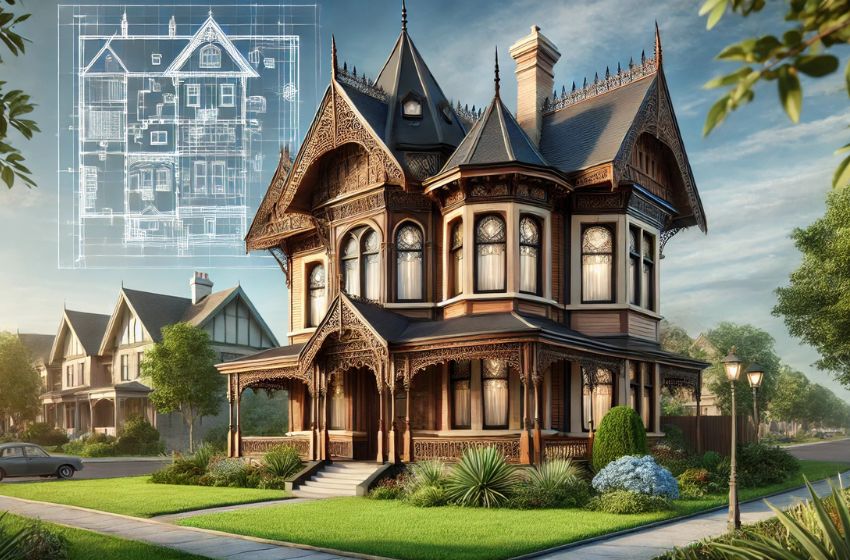Designing and constructing a Victorian-style house is a dream for many architecture enthusiasts. The intricate details, ornate facades, and historical charm make Victorian homes timeless. With advancements in technology, particularly in artificial intelligence (AI), this dream is more attainable than ever. Free AI chatbots can now assist in the design and planning phases, making the process more accessible and efficient.
1. Selecting the Right AI Chatbot Tool
The first step in your journey is to choose an AI chatbot that specializes in architectural design. These tools can generate detailed floor plans, 3D visualizations, and even suggest materials based on your preferences. Here are some notable free AI-powered platforms:
- Vitruvius: This AI architect can create multiple design options within minutes, providing floor plans and interior and exterior visuals.
- Planner 5D: Offers a user-friendly interface to design homes in 2D and 3D, allowing for customization of various architectural styles, including Victorian.
- OpenArt’s AI House Generator: Enables users to create detailed house designs, from layout to aesthetics, using AI-driven prompts.
2. Understanding Victorian Architecture
Before diving into the design process, it’s essential to familiarize yourself with the key elements of Victorian architecture:
- Ornate Facades: Decorative trims, intricate woodwork, and patterned brickwork.
- Steep Gabled Roofs: Prominent, pitched roofs often adorned with decorative elements.
- Bay Windows: Large, protruding windows that add depth and character.
- Turrets and Towers: Circular or polygonal towers that give a castle-like appearance.
Understanding these features will help you communicate your vision effectively to the AI chatbot, ensuring the generated designs align with traditional Victorian aesthetics.
3. Engaging with the AI Chatbot
Once you’ve selected your AI tool, begin the design process by:
- Inputting Your Preferences: Specify the number of rooms, desired architectural features, and any modern amenities.
- Reviewing Generated Designs: The AI will produce several design options based on your inputs. For example, Vitruvius can create multiple designs in minutes, complete with floor plans and visualizations.
- Providing Feedback: Refine the designs by offering feedback, allowing the AI to adjust and perfect the plans to your liking.
4. Visualizing the Final Product
Seeing a realistic representation of your future home is crucial. AI-powered visualization tools can transform your designs into immersive 3D models:
- Easy-Peasy.AI: Generates detailed images based on your design inputs, helping you visualize the final outcome before construction begins.
- Room AI: Offers AI-generated interior designs, allowing you to experiment with different styles and layouts.
5. Planning Construction
While AI chatbots provide comprehensive designs, it’s essential to:
- Consult Professionals: Share the AI-generated plans with architects and builders to ensure structural integrity and compliance with local building codes.
- Source Materials: Use AI suggestions to find cost-effective materials that match the Victorian aesthetic. Some AI tools can recommend suppliers or alternative materials to fit your budget.
6. Managing the Project
Efficient project management ensures your vision comes to life smoothly:
- Set Timelines: Establish clear milestones and deadlines for each phase of construction.
- Budget Tracking: Monitor expenses to stay within your financial plan.
- Regular Updates: Maintain open communication with your construction team to address any issues promptly.
By leveraging free AI chatbot tools, designing and building a Victorian house becomes a more streamlined and personalized experience. These technologies bridge the gap between classic architectural beauty and modern efficiency, turning your dream home into a reality.
Conclusion
Incorporating free AI chatbots into the design and construction of a Victorian-style house seamlessly blends classic architectural elegance with modern technological efficiency. These tools democratize the architectural process, making it accessible to enthusiasts and professionals alike. By leveraging AI for design conceptualization, material selection, and project management, you can transform your vision of a Victorian home into reality with enhanced precision and reduced costs. Embracing this fusion of tradition and innovation ensures that your dream home is both timeless and tailored to contemporary needs.
Frequently Asked Questions (FAQs):
Can AI chatbots accurately replicate Victorian architectural styles?
Yes, AI chatbots can generate designs that reflect traditional Victorian elements by analyzing vast datasets of architectural styles. However, it’s essential to review and refine these designs with professional architects to ensure historical accuracy and structural integrity.
Are these AI chatbot services truly free to use?
Many AI chatbot platforms offer free tiers with basic features suitable for initial design concepts. For advanced functionalities, such as high-resolution renderings or detailed blueprints, a subscription or one-time fee may be required.
How do AI chatbots handle local building codes and regulations?
AI chatbots can provide general design guidelines, but they may not account for specific local building codes. It’s crucial to consult with local professionals to ensure your design complies with regional regulations and standards.
Can AI assist in selecting materials appropriate for Victorian homes?
Absolutely. AI can suggest materials that align with Victorian aesthetics and recommend sustainable or cost-effective alternatives. However, final material selection should be made in consultation with suppliers and builders to ensure availability and suitability.
Is it possible to integrate modern amenities into an AI-designed Victorian house?
Yes, AI chatbots can incorporate modern amenities into traditional Victorian designs, creating a harmonious blend of classic aesthetics and contemporary functionality. Discussing these preferences with the AI tool will help tailor the design to your specific needs.


